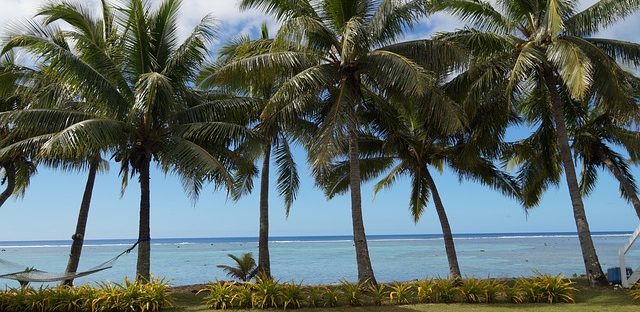- Target: Eliminate carbon emissions by 2020.
- Status: In progress
- RES: Solar photovoltaic arrays
- Implementation: The Cook Islands depend heavily on imported fuels and the cost of electricity based on these fuels is very high. Although nearly all households in the Cook Islands are connected to grid electricity, only 5.5% of households have additional solar photovoltaic systems installed, and 1% use small diesel generators. Several actions have taken place throughout the islands to increase the uptake of renewable energy. In the country's south, the Asian Development Bank's Ordinary Capital Resources has loaned US$11.19 to help fund solar projects. The EU has invested US$7.26 million, and the Cook Islands government has added an in-kind contribution of US$5.83 million. The total funding for the build out comes with an installation target in megawatts. The solar projects is expected to save 1.09 million liters of diesel consumption annually, and cut carbon dioxide emissions by 2,930 tons. This project will assist the Cook Islands government’s Office of the Energy Commissioner and the Renewable Energy Development Division in developing an energy efficiency policy implementation plan. In May 2015, the Government of New Zealand announced the completion of solar array projects in Rakahanga, Pukapuka, Nassau, Palmerston, and on the northern Cook islands of Penrhyn and Manihiki, where solar photovoltaic panels are expected to provide over 95 per cent of the electricity needs for the villages they connect to and deliver power to more than 230 homes and public buildings.
- Population: 17,379 (2016)
- Area: 236.7 km2 (91.4 sq mi)
- Link: COOK ISLANDS RENEWABLE ENERGY

